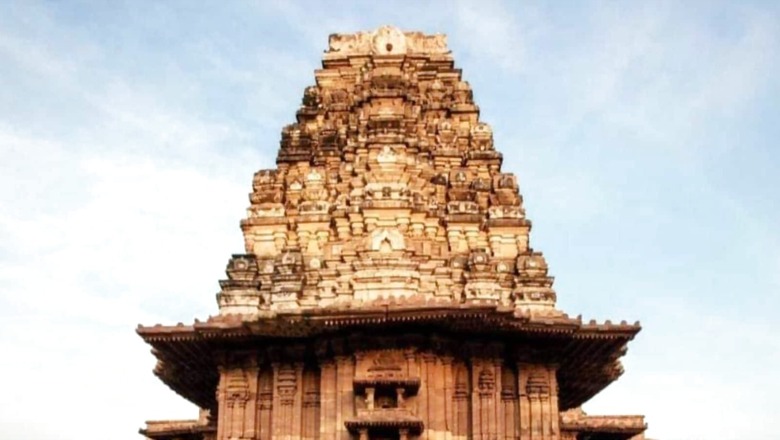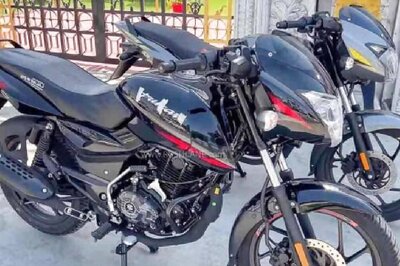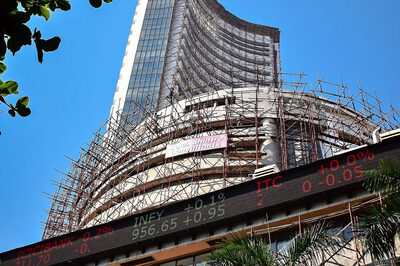
views
The United Nations Educational and Scientific and Cultural Organization (UNESCO) has recognised the historic Ramappa temple of the Mulugu district of Telangana as a world heritage site.
Three historic buildings from Telangana, Qila Warangal, the Thousand Pillars and the Ramappa temple were in the contest and finally, UNESCO included the Ramappa temple in the final list.
The Ramappa temple was built by the Kakatiya King Ganapatideva Chakravarthy’s sub-ruler Recherla Rudrayya in the year 1213 AD. History says the Seuna Sena dynasty king Jaitugi defeated Ganapatideva and imprisoned him. King Rudrayya fought with Jaitugi and freed Ganapatideva. For Rudrayya’s help, Ganapatideva wanted to give a precious Ramappa temple.
The works of the temple, in which the Ramalingeswaram (Shivalingam) is enshrined, began in 1173 AD and were completed 40 years later in 1213 AD.
The beauty of life-affirming sculptures and sounding sculptures is expected to attract people.
Thin threaded holes between the stone pillars reflect the richness of the architecture of Kakatiya Kings. Even as the entire temple is dark in colour, the Ramalingeswara in the inner temple illuminates.
Beautiful sculptures are depicting Shivatandavam, Sivakalyanam dance forms, Ramayana and Mahabharata.
The temple is surrounded by 12 Madanikas, Nagini and Koyastri sculptures in various poses. Some of the statues symbolise the priority of women in the Kakatiya dynasty and also their ornaments.
The technical mastery of the Kakatiyas can be understood by the rainwater drainage system that was set up around the temple.
The Nandi idol faces the sanctum, the Kameshwara temple on the right and the Kateshwara temple on the left.
Elephants were mostly used for their construction. The temple was the house for many cultural, artistic and social events. The sculptures also tell the important events of the Ramayana, the Mahabharata, the Ksheera Sagara Mathanam, and the Sivaparvati kalyanam. It also features dance and martial arts.
The Perini Shivatandava were the main subjects of the sculptures in the temple.
The Ramappa Lake, which is a short distance from the temple, is always filled with water. The lake was built with sluices and a levee between the two mounds. It has a storage capacity of 2,912 TMC and a water level of 35 feet. The pond is 610-meters long. Farmers cultivate two crops a year on about 10,000 acres with two sluices. This is still the main pond in the area.
All the Kakatiya temple structures are in star style and the Ramappa temple is also in the same shape.
The sanctum sanctorum and the maha mandapam have access on three sides. Generally, the temple is dominated by idols of God. But the Ramappa temple was built not only as a temple also reflection of culture, traditions, mythology and history.
Another major attraction of the temple is the Nandi idol. Opposite the sanctum sanctorum, Nandi looks like to be waiting for Lord Shiva’s command.
The 800-old Ramappa temple is still intact today because the temple was constructed in sandbox technology.
A three-meter-deep foundation is dug at the temple construction site and filled with sand. Take care to keep it always moist. The temple was built by stacking stones on the sand.
“I can be an enemy to anyone. But not this temple. Do not destroy it,” Recherla Rudrayya, builder of the temple mentioned in an inscription.
The temple is made of stone. But the Sanctorum was built of lightweight brick to reduce the weight on the temple according to the nature of the soil. These bricks float in water and are smaller than the ones used today. Nowhere in the country have such bricks were used and how these were made is still a mystery.
The Shivalingam is visible even without electric lights in the Sanctorum. The mahamandapana in front of the Sanctorum has four large black stone pillars. The lingam looks brighter as the outer light falls on it.
Three coloured stones were used in many places in the temple. Red and white mixed coloured stones are also found in some places.
Inside the temple, the mahamandapam and some of the sculptures are made entirely of black stone while the outside of the temple uses red and white stones.
In some places, pictures of Egyptian and Persian people can be seen. It is known that they had relations with foreigners during the Kakatiya period. There are also some sculptures of Jains and Buddhists.
Music can be heard by touching the sculpture of Lord Krishna sitting on a tree during Gopika’s vastrapaharanam and also a sculpture has only four legs for three people. But appear to have different legs.
Read all the Latest News, Breaking News and Coronavirus News here.















Comments
0 comment